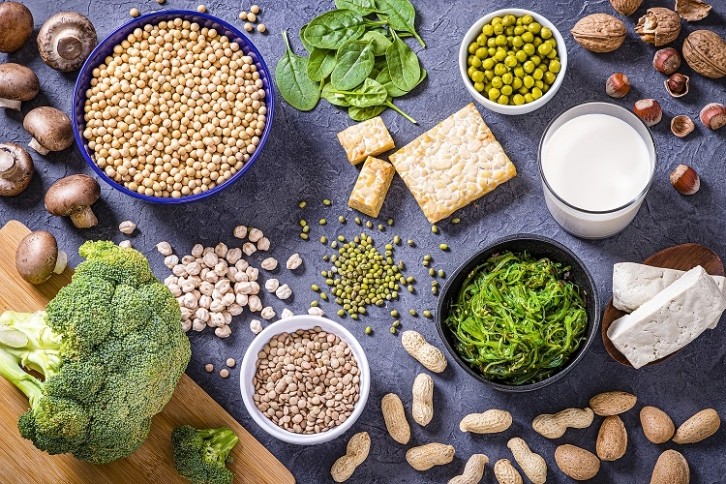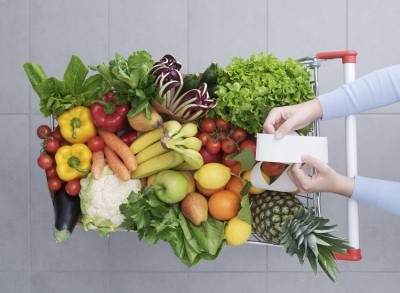Plant-based sales ARE growing, just not the usual suspects

What? Plant-based meat sales are lagging?!
No, this isn’t news to anyone in the industry. The plant-based ‘slowdown’ has been on food manufacturers’ radar for at least a couple of years now, with the cost-of-living crisis and market saturation just two of the factors stunting category growth.
But just because sales of plant-based meat alternatives are sluggish, doesn’t mean plant-based across the board is struggling to grow. It’s not.
The unusual suspects of the plant-based boom
When industry and media refer to a plateauing in plant-based, they’re largely referring to plant-based meat analogues.
That’s for two reasons: firstly, the plant-based meat category has been plateauing, and secondly, measuring sales of packaged products sold from one section in-store is easier to do.
What’s more challenging is measuring sales of plant-based ingredients from multiple categories. These less-hyped ingredients range from tempeh and tofu (high-protein soy-based products that can substitute, but don’t mimic, meat) through to legumes and beans.
“Actual sales of plant-based ingredients are very much increasing,” explained Jeroen Willemsen, innovation lead, Protein Shift, at Dutch agrifood ecosystem Foodvalley.
But they’re just not the numbers on industry’s radar. “It’s very difficult to get the actual [sales] numbers when products are used as an ingredient, rather than sold as a single SKU,” he said at food- and ag-tech conference F&A Next in the Netherlands. “I know for a fact that’s where the growth is.”

Why is the sale of plant-based ingredients on an upwards trajectory, whereas the plant-based meat market is flatter than it’s been in recent years? Willemsen puts it down to consumer routines. Tempeh, legumes, and beans are convenient for the consumer; they’re not necessarily delegated to one section of the supermarket.
“Even though we would like [consumers] to go to a separate aisle, to go and pick up that packet of plant-based meat or seafood, we also have to be realistic… Obviously we haven’t [managed] to reach out to them over the past 10-15 years.
“But we can reach out to the consumer we want to reach with more convenience, and that’s what’s happening right now.”
What do the retailers say? And can they be doing more?
Willemsen is not alone in this view. The UK’s largest supermarket retailer Tesco has also observed a rise in demand for tofu and tempeh, which earlier this year observed, was up volume-wise by 20%.
Tesco also noted an increase in scratch cooking with vegetables and other meat-free ingredients, as well as plant-based whole cuts such as steak.
“Customers are starting to understand the versatility of plant-based ingredients and whole cuts, and are creating a wide variety of meals such as tofu stir-fries, meat-free curries using chicken alternatives or beans and pulses, and classic steak and chips using plant-based steaks,” said Tesco’s plant-based food buyer Cate May back in April.

Some in the sector believe retailers can be doing more to increase plant-based sales.
Miriam Ueberall, chief R&D officer at Upfield Research & Development, for one, is critical of supermarkets’ segmentation of plant-based products – which can see alternatives placed in less-than-optimal locations.
“Retailers can facilitate the entry point for consumers a lot, by having the right shelf placement, by not having a segment at the back of the store which claims to be ‘free-from’ or ‘alt meat’.”
Instead, the R&D lead would prefer plant-based alternatives be located alongside their conventional dairy or meat counterparts. In so doing, she believes making animal-free swaps would be easier for consumers.
Manufacturers have a role to play in encouraging plant-based uptake
But it’s not only the responsibility of retailers. Manufacturers have a major role to play in encouraging plant-based uptake, suggested Ueberall.
Recipe development aside, it’s also about developing the right format and size of products that best hit the mark with consumers.
Others agree. Manufacturers, retailers and even foodservice operators can help encourage plant-based consumption by making it as easy as possible for consumers. That may not mean selling a plant-based seafood or meat product separately, but instead mixing it in with a salad or a sandwich for convenient consumption.
If it’s a plant-based seafood product, for example, brands might be better off getting creative with its presentation and format, suggested Kianti Figler, founder and CEO of Dutch cultivated salmon cell fat start-up Upstream Foods, at F&A Next.
“I think there are better ways to go about it, and that’s what we need to be focusing on.”








